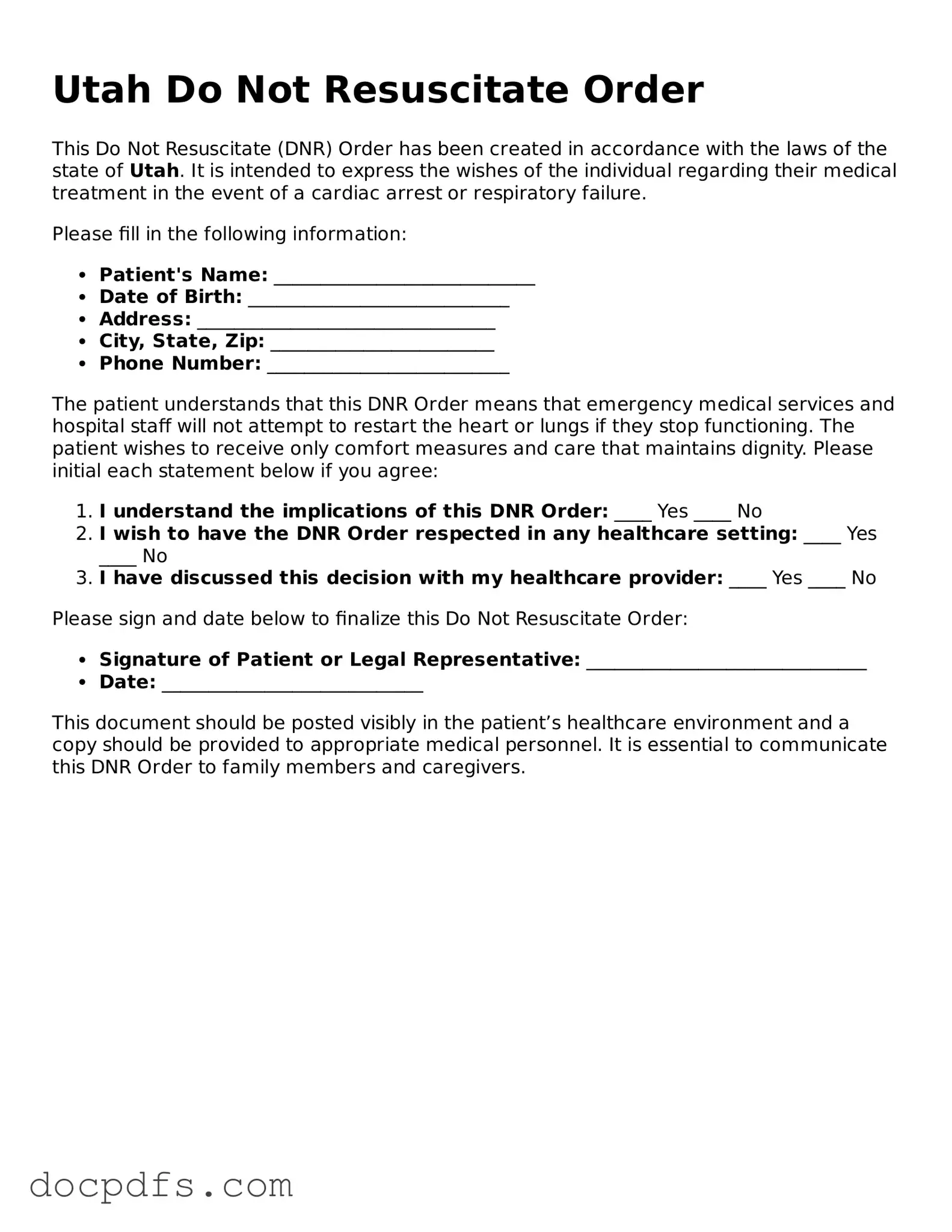What is a Do Not Resuscitate (DNR) Order in Utah?
A Do Not Resuscitate Order (DNR) is a legal document that allows individuals to refuse cardiopulmonary resuscitation (CPR) and other life-saving measures in the event of cardiac arrest or respiratory failure. In Utah, this order is designed to ensure that a person's wishes regarding end-of-life care are respected by medical professionals.
Who can request a DNR Order?
Any adult who is capable of making their own healthcare decisions can request a DNR order. Additionally, a parent or legal guardian can request a DNR order for a minor. It's important that the individual understands the implications of the order and that it reflects their wishes.
How do I obtain a DNR Order in Utah?
To obtain a DNR order, follow these steps:
-
Consult with your healthcare provider to discuss your wishes and ensure that a DNR is appropriate for your situation.
-
Complete the Utah DNR Order form, which can be obtained from your healthcare provider or online through state resources.
-
Sign the form in the presence of a witness or notary, as required.
-
Provide copies of the signed DNR order to your healthcare provider, family members, and anyone else involved in your care.
Is a DNR Order valid in all healthcare settings?
Yes, a properly completed and signed DNR order is valid in all healthcare settings in Utah. This includes hospitals, nursing homes, and emergency medical services. However, it’s crucial to ensure that all relevant parties have a copy of the order to avoid confusion during emergencies.
Can I change or revoke my DNR Order?
Yes, you can change or revoke your DNR order at any time. To do this, simply create a new DNR order that reflects your current wishes and distribute it accordingly. Alternatively, you can verbally inform your healthcare provider or family members that you wish to revoke the existing order.
What happens if I don’t have a DNR Order?
If you do not have a DNR order in place, medical professionals are obligated to perform resuscitation efforts if you experience cardiac arrest or respiratory failure. This may include CPR, intubation, and other life-saving measures, regardless of your preferences.
Are there any costs associated with obtaining a DNR Order?
There are typically no costs associated with obtaining a DNR order itself. However, you may incur costs related to consultations with healthcare providers or legal assistance if you choose to seek help in completing the form. Always check with your healthcare provider for any specific fees.
How can I ensure my DNR Order is respected?
To ensure your DNR order is respected, take the following steps:
-
Distribute copies of the DNR order to your healthcare provider and family members.
-
Keep a copy of the DNR order in an easily accessible location, such as on your refrigerator or in your medical records.
-
Discuss your wishes with your healthcare provider and family to ensure everyone understands your preferences.
